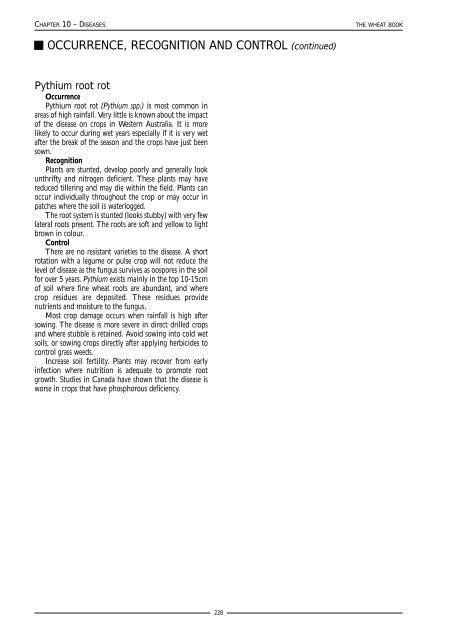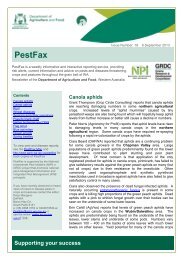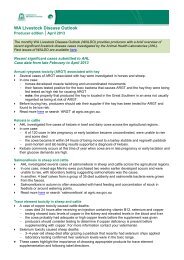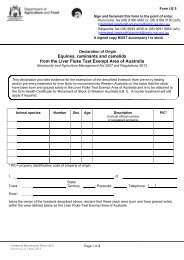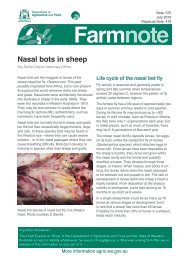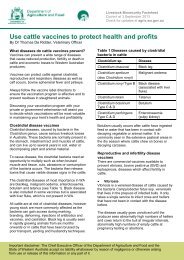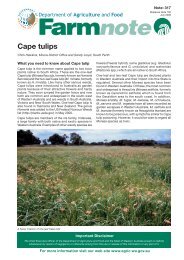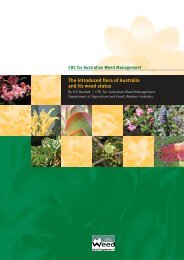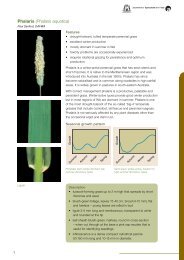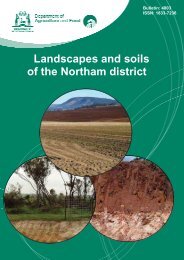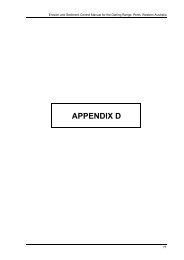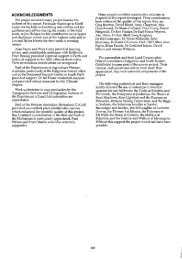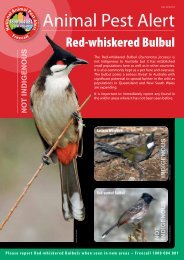The wheat book : principles and practice - Department of Agriculture ...
The wheat book : principles and practice - Department of Agriculture ...
The wheat book : principles and practice - Department of Agriculture ...
Create successful ePaper yourself
Turn your PDF publications into a flip-book with our unique Google optimized e-Paper software.
CHAPTER 10 – DISEASES THE WHEAT BOOK<br />
OCCURRENCE, RECOGNITION AND CONTROL (continued)<br />
Pythium root rot<br />
Occurrence<br />
Pythium root rot (Pythium spp.) is most common in<br />
areas <strong>of</strong> high rainfall. Very little is known about the impact<br />
<strong>of</strong> the disease on crops in Western Australia. It is more<br />
likely to occur during wet years especially if it is very wet<br />
after the break <strong>of</strong> the season <strong>and</strong> the crops have just been<br />
sown.<br />
Recognition<br />
Plants are stunted, develop poorly <strong>and</strong> generally look<br />
unthrifty <strong>and</strong> nitrogen deficient. <strong>The</strong>se plants may have<br />
reduced tillering <strong>and</strong> may die within the field. Plants can<br />
occur individually throughout the crop or may occur in<br />
patches where the soil is waterlogged.<br />
<strong>The</strong> root system is stunted (looks stubby) with very few<br />
lateral roots present. <strong>The</strong> roots are s<strong>of</strong>t <strong>and</strong> yellow to light<br />
brown in colour.<br />
Control<br />
<strong>The</strong>re are no resistant varieties to the disease. A short<br />
rotation with a legume or pulse crop will not reduce the<br />
level <strong>of</strong> disease as the fungus survives as oospores in the soil<br />
for over 5 years. Pythium exists mainly in the top 10-15cm<br />
<strong>of</strong> soil where fine <strong>wheat</strong> roots are abundant, <strong>and</strong> where<br />
crop residues are deposited. <strong>The</strong>se residues provide<br />
nutrients <strong>and</strong> moisture to the fungus.<br />
Most crop damage occurs when rainfall is high after<br />
sowing. <strong>The</strong> disease is more severe in direct drilled crops<br />
<strong>and</strong> where stubble is retained. Avoid sowing into cold wet<br />
soils, or sowing crops directly after applying herbicides to<br />
control grass weeds.<br />
Increase soil fertility. Plants may recover from early<br />
infection where nutrition is adequate to promote root<br />
growth. Studies in Canada have shown that the disease is<br />
worse in crops that have phosphorous deficiency.<br />
228


